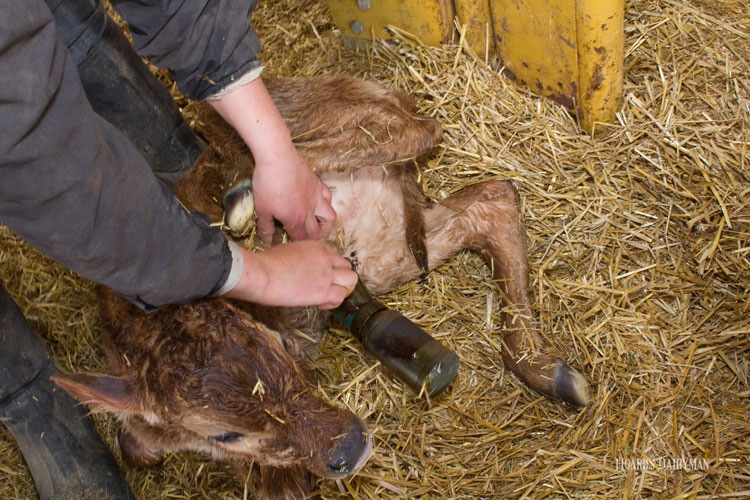
The navel cord provides a lifeline between the dam and its calf during gestation. After birth, the role changes, and the navel cord stump that remains suddenly becomes an outlet for pathogens to enter the calf’s body and move into the bloodstream.
Usually, the navel stump should dry up and fall off by 2 weeks of age. However, if not correctly cared for, the calf may develop a navel infection. Five to 20 percent of calves in the United States develop navel infections, and 1.6 percent of calf mortality is connected to this condition.
In a University of California Dairy newsletter article, Emre Gürdal from the UC Davis Veterinary Medicine Teaching and Research Center and Noelia Silva del Rio, a University of California Cooperative Extension dairy herd health specialist, offered advice for keeping navels clean and healthy.
Affected calves that are caught early enough can be treated with antimicrobial and supportive therapies to control the spread of the disease. Still, calves with a navel infection may become chronically ill and perform poorly throughout their lifetime. For this reason, prevention is the best medicine.
Gürdal and Silva del Rio said the first step is to keep everything around the calf clean. This includes the maternity area and the hutch or pen where the calf is moved to.
The navel must also be disinfected. Immediately after birth, fully cover the navel with fresh disinfectant solution. Effectiveness is reduced if this step is delayed, the authors explained.
When applying a disinfectant, keep it clean by covering the cup and changing the solution frequently. Gürdal and Silva del Rio noted that contaminated cups can turn navel dipping into a problem rather than a solution.
Similarly, the person doing the dipping should wear clean gloves. Dirty hands elevate the chances for pathogen exposure.
Many farms that dip navels likely only do it once, but Gürdal and Silva del Rio encouraged dipping calves again when they are moved to a hutch or pen. If there are any concerns about infection, the navel should be dipped once a day until the cord dries up. Also, control flies as they can be a source of infection.
When the disinfectant is not in use, follow label directions for storage to maintain effectiveness. Keep containers at room temperature and away from heat, moisture, and direct sunlight.
In addition to dipping the navel, be sure calves receive good quality colostrum shortly after birth. The immunity that comes from colostrum can help the calf fight an infection, should one occur.








